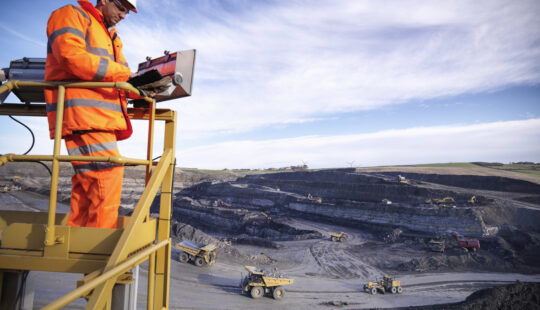Having experienced the equivalent of 10 years of digital change in the past 18 months or so, organisations are addressing the realities of transformation as digitalisation becomes the business norm.
Leaders from two high-performing organisations in ANZ recently shared their experiences with digitalisation during a SAPPHIRENOW Asia Pacific broadcast hosted by Des Fisher, innovation principal at SAP ANZ. Here is a sampling of their far-ranging thoughts on the sustainable business realities behind innovating on cloud-based digital platforms.
Digitalisation is a mindset and tech transformation
For Australian-based Stockland, digitalisation involved transforming people’s mindsets along with systems company-wide. As one of the largest diversified real estate groups in Australia, the company owns, develops, and manages a large portfolio of retail town centres, workplace and logistics assets, residential communities, and retirement living villages. They’ve replaced over 100 disparate, legacy software systems with SAP’s integrated platform, including SAP S/4HANA and SAP Ariba, as well as embedded AI and robotics.
“We now have a single source of the truth,” said Tiernan O’Rourke, CFO at Stockland. “I’m absolutely convinced that in time we’ll look back and say that was one of the best things we did in the 70-year history of the company…our digitization journey shows that unless you’re on the journey you’re going to struggle in business, not only in Australia, but globally.”
Stockland began by defining digitalisation on the company’s own terms. The digital platform was designed to strike a balance between achieving three objectives: organisational risk, governance, and business growth.
“We first looked at what digitisation meant to us and came at it by putting the company on the core SAP platform,” said O’Rourke. “We’re a tactile industry of property, bricks, and mortar. Getting people’s minds away from physical to digital was…one of the biggest obstacles to overcome.”
Digital backbone drives innovation
Oil and gas provider OMV New Zealand recently won an SAP global Innovation Award for its groundbreaking digitalisation that included digital twins and augmented reality (AR) in onshore and offshore inspections. Replacing paper-heavy processes with digitalised and integrated workflows based on the latest mobile solutions and wearable technologies will help OMV improve decision-making, performance, and efficiencies in inspections and maintenance. Its integrated workflow management relies on SAP Plant Maintenance (SAP S/4 HANA), SAP Intelligent Asset Management Suite, SAP Asset Manager, and HoloLens 2.
“The use of automation and AI-driven technologies for creating intelligent digital twins is a key enabler for global scalability, and accelerates creating the digital backbone of the company during digital transformation. Enhancing this technology with an augmented reality experience including mark-up annotations, provides a solid basis for data insights, data-driven decision making, and performance optimization,” said Farid Akbari, functional lead for digital transformation at OMV New Zealand. “This innovation project will change the way we are working, and enables us to position ourselves among digital frontrunners within our industry.”
Digital platforms are core to supplier relationships
Acknowledging that no business does business alone, Tiernan said that Stockland’s deep supplier relationship management strategy is foundational to customer centricity.
“If you don’t partner with best-in-breed, like-minded companies to help deliver premium services to customers you won’t win,” he said. “We have 14 percent market share in residential business…because we evaluate every step of the customer journey, including supplier choice…you can’t know your suppliers unless you have deep relationships and are collaborating with them at a very granular level…Collaboration is an absolute threshold issue in business today.”
Close gap between DX and business realities
When asked about some of the biggest DX challenges, Akbari discussed the gap between innovation aspirations and reality. He pointed out that while everyone wants simplicity, getting there means answering difficult questions.
“We asked ourselves if we had the right organisation in place to achieve digital maturity,” he recalled. “Other questions were about managing resistance to change, and how to actively support the change management process with tools that were changing the way we work…We asked how to build and retain skills over time as innovations like blockchain, IoT, and cloud computing continue [to emerge].”
Akbari also warned organisations not to neglect core details such as infrastructure capabilities, technology integration, and resultant business process changes.
“Often the business comes up with a good idea, but we’re not ready yet,” he said. “For example, AR had to be integrated into the environment…You also have to consider operational maturity…As a global gas and oil company, we have different maturity levels of all assets, and have to map where we are for each asset, and how we will achieve that automation level. “
Sustainability is much more than climate change
While ESG (Environmental, Social, and Governance) demands tend to emphasize climate change, O’Rourke urged companies to consider all aspects of sustainability, including diversity.
“Everyone talks about climate change, but that’s just about the environment. To do business successfully…you’re going to have to be very balanced in the E, S, and G of ESG,” he said. “Everyone is focused on net zero carbon, and rightly so. But we can’t do that in isolation…We have to jump on [behaviour change] proactively to get suppliers to work with us in a way allows us to operate effectively. On the diversity side, business has been playing lip service for so long, and needs to get serious about focusing on this change.”
Watch the entire Industries Redefined SAPPHIRE NOW Asia Pacific replay
This article also featured on SAPBrandVoice on Forbes



